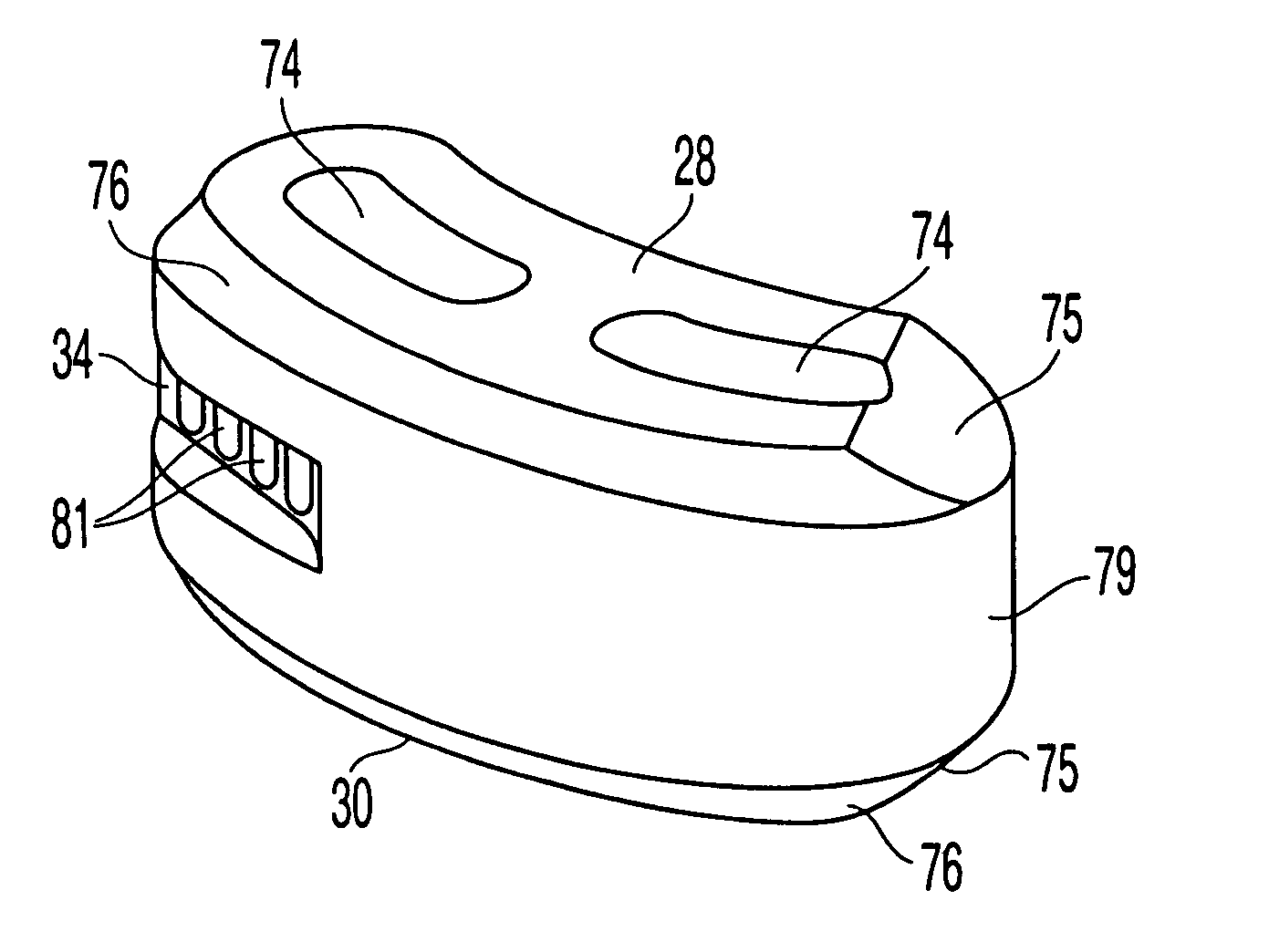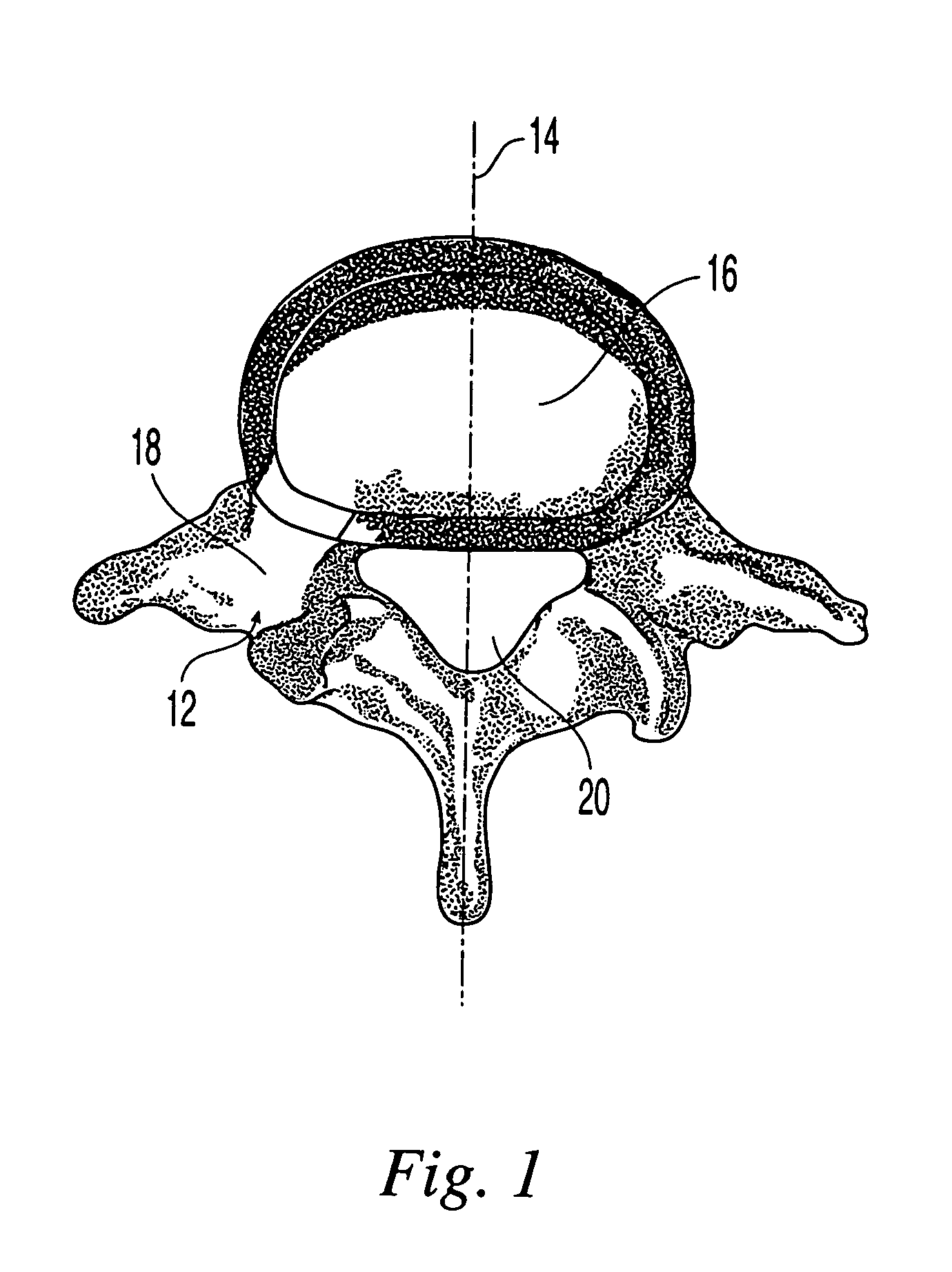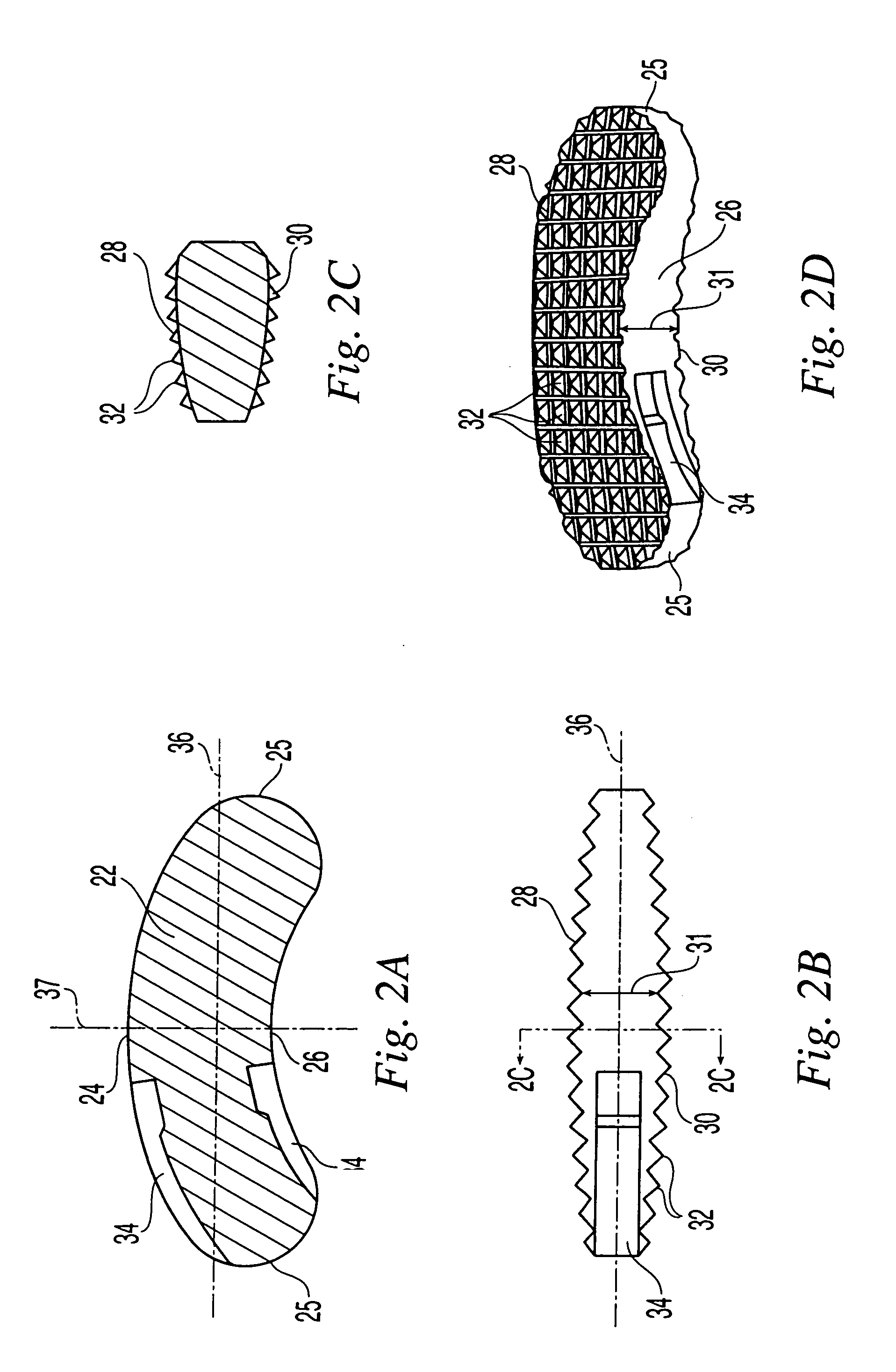Intervertebral implant for transforaminal posterior lumbar interbody fusion procedure
a transforaminal posterior lumbar interbody and interbody technology, applied in the field of intervertebral implants, can solve the problems of easy insertion of implants, limited lateral inserting of implants, severe low back pain, etc., and achieve the effect of facilitating insertion and preventing slippag
- Summary
- Abstract
- Description
- Claims
- Application Information
AI Technical Summary
Benefits of technology
Problems solved by technology
Method used
Image
Examples
Embodiment Construction
[0052]While various descriptions of the present invention are provided below, it should be understood that these descriptions are intended to illustrate the principals of the present invention and its various features, which can be used singly or in any combination thereof. Therefore, this invention is not to be limited to only the specifically preferred embodiments described and depicted herein.
[0053]The transforaminal posterior lumbar interbody fusion implant (“T-PLIF implant”) is designed for use as an intervertebral spacer in spinal fusion surgery where an affected disk is removed from between two adjacent vertebrae and replaced with an implant that provides segmental stability and allows for bone to grow between the two vertebrae to bridge the gap created by disk removal. Specifically, the T-PLIF implant is designed for the transforaminal lumbar interbody fusion (T-PLIF) technique, which, as shown in FIG. 1, involves a posterior approach 12, offset from the midline 14 of the sp...
PUM
 Login to View More
Login to View More Abstract
Description
Claims
Application Information
 Login to View More
Login to View More - R&D
- Intellectual Property
- Life Sciences
- Materials
- Tech Scout
- Unparalleled Data Quality
- Higher Quality Content
- 60% Fewer Hallucinations
Browse by: Latest US Patents, China's latest patents, Technical Efficacy Thesaurus, Application Domain, Technology Topic, Popular Technical Reports.
© 2025 PatSnap. All rights reserved.Legal|Privacy policy|Modern Slavery Act Transparency Statement|Sitemap|About US| Contact US: help@patsnap.com



